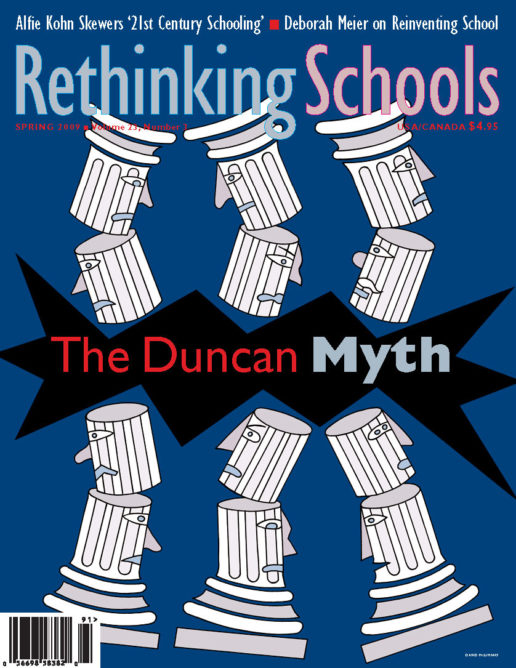Preview of Article:
Six, Going on Sixteen
Illustrator: Henrik Drescher
“I saw you on My Space!”
“Yesterday after school Trina and Shayla got in a catfight over Brandon!”
“My butt is hot!”
“I got his phone number!”
“She thinks she’s cuter than me.”
These comments may or may not raise an eyebrow in any middle school classroom, but the year they became a common occurrence in my kindergarten and 1st-grade classroom threw me for a loop. It was just a few years ago, and at that time I had been teaching for 18 years. My combined kindergarten and 1st-grade classroom was in a small, urban K-8 school serving about 165 students from a mix of cultures and classes. The student population is about 45 percent black, 27 percent Hispanic, and 23 percent white. That particular school year was one of the most challenging I have experienced. The social dynamics were a constant source of stress and strife for my students, my families, my assistant teacher, and for me. At the end of a particularly frustrating day I described the situation to my principal: “We have two ‘middle schools’ in our school. The middle school and the K-1!”

